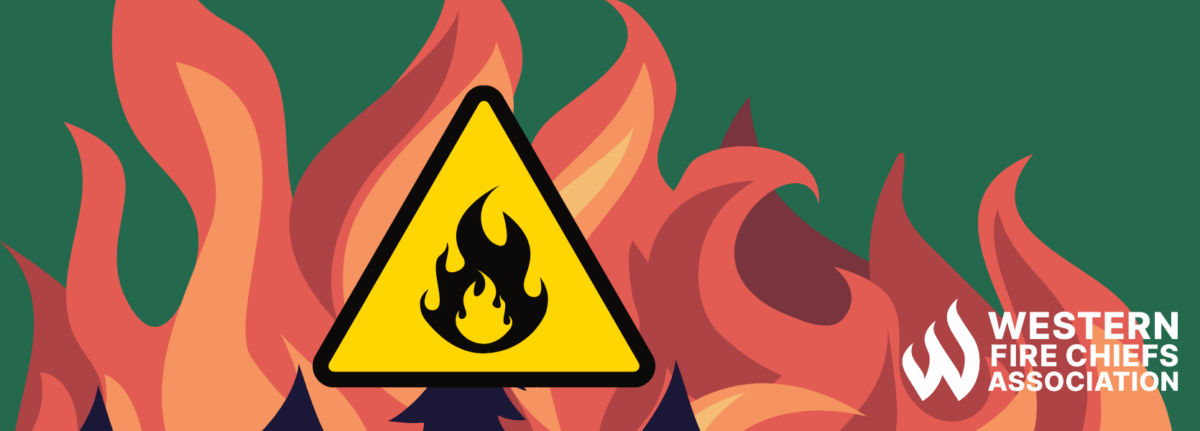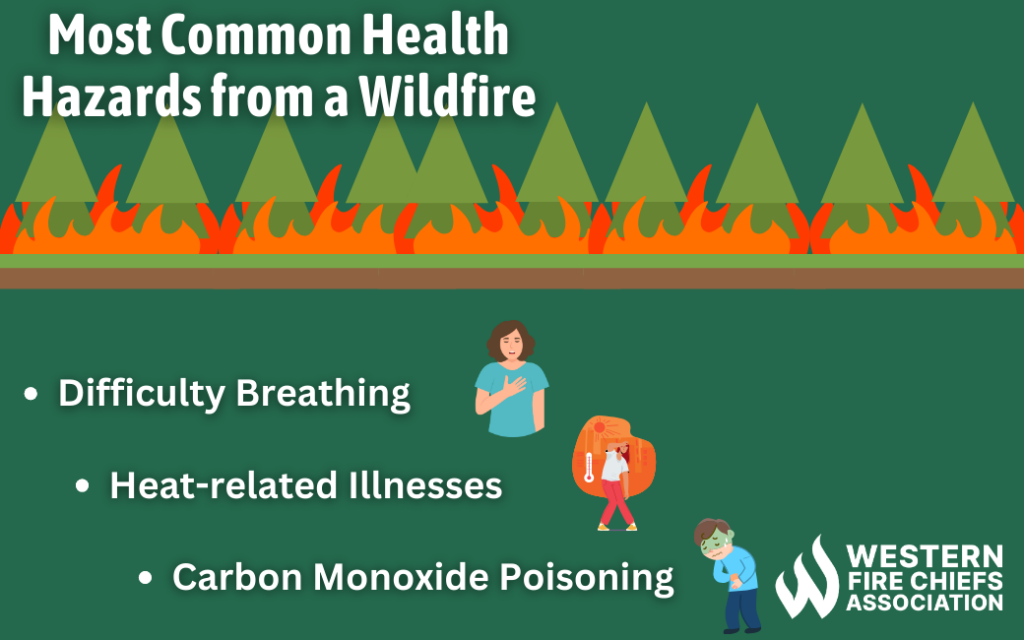Fire Pit Safety Tips
Stay safe around the campfire with tips from the Western Fire Chiefs Association. Learn essential precautions and practices for a worry-free outdoor campfire.
Uncover the physical and health hazards of wildfires. Explore the dangers faced by responders and communities, with safety insights from the experts at the WFCA.
Published:January 2, 2024
Edited:April 14, 2024

Uncover the physical and health hazards of wildfires. Explore the dangers faced by responders and communities, with safety insights from the experts at the WFCA.
As wildfires grow more common, it is crucial to recognize the hazards they present and understand how individuals can reduce the risks associated with wildfires. This guide examines the most prevalent health and physical dangers that are caused by wildfires.
The heat and smoke generated during a wildfire can cause both long and short-term health risks for people in the impacted areas. Here are the most common health hazards induced by wildfires and how they can be prevented:
Tiny particles from the smoke can penetrate deeply into the lungs or can pass directly into the bloodstream.1 Inhaling this material can cause difficulty breathing and can worsen asthma or other lung problems. Smoke can also irritate the eyes, nose, and throat or result in headaches for individuals with no underlying conditions. To reduce the risk of wildfire smoke, ensure indoor air is filtered, utilize N95 masks when outdoors, and reduce the amount of time spent outdoors or in the smoke.2
Similar to wildfire smoke, the ash and dust that is left behind after a wildfire can be a health hazard if inhaled or touched, as they may contain harmful or toxic material. To minimize the risk of exposure to ash or dust, keep windows and doors shut to prevent ash from entering, use wet cloths or mops to clean all surfaces, and wear the proper personal protective equipment when cleaning up ash.
Wildfires produce carbon monoxide, a dangerous and odorless gas that can be fatal if large amounts are inhaled. To reduce the risk of coming in contact with carbon monoxide, utilize carbon monoxide detectors indoors.
Wildfires generate a lot of heat that can result in heat exhaustion or heatstroke for individuals who come in close contact with the fire. To reduce the risk of a heat-related illness, drink plenty of water and find shelter indoors with air conditioning available.

Wildfires leave a path of destruction that can lead to physical hazards for both residents and wildlife that live in the affected area. The following are some of the most common physical hazards from wildfires and how they can be prevented:
The aftermath of a wildfire may include scattered debris such as shattered glass, nails, wood, metal, plastics, and assorted solid items, posing a risk of puncture wounds, cuts, and other injuries. To mitigate this risk, individuals are advised to limit their time in fire-damaged areas. When venturing into these areas, it is recommended to wear appropriate attire such as a helmet, durable clothing, and gloves.
Similar to debris, wildfires can disperse parts of buildings and weaken their structural integrity due to the intense heat that is produced, making them susceptible to collapse. This poses a significant danger to individuals who may be inside or near these structures. To reduce the risk of encountering unstable building structures, refrain from entering or approaching any building that has been exposed to intense heat until officials have declared it safe to do so.
It is very common for power lines and electrical infrastructure to become damaged during a wildfire, increasing the likelihood of electrical accidents. To reduce the risk of an electrical incident happening, stay clear of downed power lines and report them to 911.
Water may become contaminated during a wildfire with ash, debris, firefighting residues, and other harmful substances, making it unsafe for consumption. To reduce the risk of water-related hazards, carry a sufficient amount of water with you, boil any unbottled water before consumption, and follow local advisories regarding water safety.
Burning trees can pose a hazard as they may fall unpredictably. Falling trees can cause injury or block evacuation routes. To reduce the risk of tree-related hazards, avoid sheltering under or near burning trees and keep a safe distance from trees that may have been affected by wildfires.3
Individuals can reduce their risk of wildfire hazards by getting involved in a combination of personal preparedness and community efforts. People are encouraged to wear appropriate personal protective equipment (PPE). Additionally, creating and practicing an evacuation plan, including multiple escape routes, and maintaining an emergency kit with essential supplies, are crucial steps. Many local fire departments offer community initiatives for wildfire preparedness, providing guidance on creating defensible space around properties.4
Stay safe around the campfire with tips from the Western Fire Chiefs Association. Learn essential precautions and practices for a worry-free outdoor campfire.
Discover essential firework safety tips to ensure a dazzling display without accidents. Learn how to celebrate responsibly with expert guidance from WFCA.
Explore the role of AI in wildfire prediction with guidance from the WFCA. Learn how advanced algorithms and data analytics enhance early detection and response.